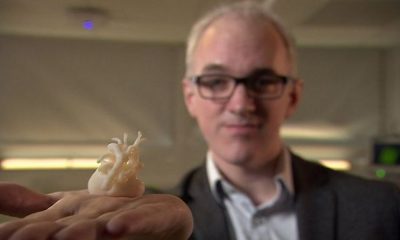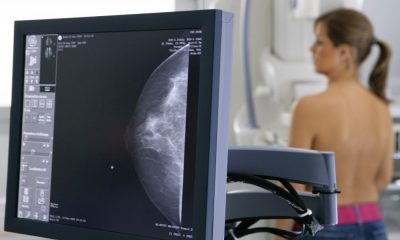You feel a pain in your chest. You begin to feel nauseous. Suddenly a tingling feeling shots down your arm. You panic as you wonder if it is a heart attack. And indeed, these are some of the classic symptoms (symptoms are slightly different for men and women), and if you get them you should get medical attention as quickly as possible. Over 700,000 Americans have heart attacks every year.
What has happened is that one of the arteries in your heart has become blocked, and the blood that usually flows through it carrying oxygen and nutrients to part of your heart is no longer there. And without oxygen the cells in this part of the heart soon begin to die.
How and Why a Heart Attack Occurs
Many people think that their arteries are similar to the water pipes in their house, which sometimes get clogged when “gunk” builds up in them. But they are actually quite different. In your arteries, and particularly the ones in your heart, the walls of the arteries interact with the blood that flows through them. And since this blood carries many different live cells, there is a constant communication and interaction between them and the cells in the walls of your heart. Because of this, these cells participate in the development of a heart attack.
The major thing that causes a heart attack is a buildup of plaque in the arteries, referred to as atherosclerosis. This buildup does not happen suddenly; it builds up slowly over many years – usually over several decades. Surprisingly, though, in most cases, it isn’t the plaque itself that causes most heart attacks.
But why does this plaque build up? Part of the reason is inflammation. As you likely know, inflammation is produced when your body senses an injury or a foreign object. It immediately goes to work to repair the injury or get rid of the foreign object.
To understand inflammation’s role in the process we have to look at how cholesterol is distributed throughout the body. We usually refer to it as LDL or HDL cholesterol, but these initials actually refer to the carrier of the cholesterol. (Cholesterol itself does not dissolve in blood so it needs a carrier). Most people have heard that LDL cholesterol is “bad cholesterol” and HDL is “good cholesterol,” but this is not exactly true. Both types of cholesterol actually play an important role in your body.
The problem is that the LDL passes in and out of the walls of your arteries. At low densities very few LDL’s get stuck, but at higher concentrations more and more begins to stick, and the greater the concentration, the greater the number that get stuck. Looking closely at the LDL’s we see why. The LDL particles are not all the same size; some are large and some are small. And it’s the small ones that get stuck. This means that we would like most of our LDL” to be large; unfortunately, we don’t have much control over this.
When large numbers of LDL’s get stuck, our immune system senses it as a danger and sends out inflammation cells to rectify the problem. The first inflammation cells to react are called monocytes. They attach themselves to the artery walls at the LDL buildup and soon begin to multiply. As they grow they develop into more powerful agents called macrophages. The macrophages go after the LDL particles and begin ingesting them. Soon they are so packed with LDL’s they begin to look foamy; at this stage they are referred to as foam cells.
At the same time, T cells from the immune system also go to work trying to get rid of the LDL’s. They release what are called cytokines that amplify the process. Together with the macrophages they create what is called a fatty streak that eventually develops into a bulging section of plaque on the artery wall. This section of plaque will continue to grow over the years, and it will eventually develop a “cap” over it. Surprisingly, it is not this bulging section of plaque that actually causes most heart attacks. It can grow big enough to block the artery, but only about 15-percent of heart attacks are caused by this blockage.
As the plaque grows, however, inflammatory substances secreted by the foam cells within the plaque can weaken the cap. If this happens, a crack, or channel, forms deep within the interior that leads to the surface. The foam cells then release chemicals that can cause a blood clot above the cap, and it is this clot that completely blocks off the artery. This is when most heart attacks occur.
What Causes This to Occur?
There are, of course, many things that can contribute to this. And by avoiding them as much as possible you can reduce your chances of a heart attack. They are:
- Age (this is one you can’t control). It usually takes years for the plaque buildup to occur.
- Cholesterol level. High levels of cholesterol initiate the process.
- Diet. The best way to keep your LDL cholesterol level low is through diet.
- Smoking. Don’t smoke.
- High blood pressure. Keep your blood pressure low.
- Obesity. Watch your waistline.
- Little or no exercise. Make sure you exercise several times a week.
- Keep stress to a minimum.
What Happens After You Get to the Hospital
Once you’re sure you’ve had a heart attack it’s important to get to the hospital as quickly as possible. One of the first things they will do there is administer drugs to clear up the blockage (if it has not cleared up on its own). Several tests will also likely be done. Two of them are an ECG and a blood test. The ECG is a device that monitors the electrical activity of the heart muscles; it produces a small electrical signal each time the heart beats. This will tell the cardiologist how well the heart is functioning, and whether any damage has occurred. The blood test is used to look for enzymes in the blood that were produced during the heart attack. They tell the doctor that a heart attack has, indeed, occurred.
Echocardiography will also be used to look directly at the heart. It uses ultrasonic waves; they are sent out and reflected back, and they also show any damage that has occurred. An angiogram will also be taken (usually later during the operation). In this case a dye is inserted in the blood and it is examined using X-rays as it passes through the heart.
Once the area of blockage is located the cardiologist will insert a hollow tube (catheter) into a large artery in your groin. Using X-ray technology, the tube will be guided to the blockage in the heart’s artery. A balloon is then used to widen the artery. Then a stent (a tube of mesh wire) will be inserted to hold the artery open. The latest stents have medicine embedded in them to help stop the chances of a blockage reoccurring.
In some cases there is too much damage for a stent (or several stents) to be used and a bypass will be needed. In this case a vein is taken from the leg and used as a bypass tube. The blood then lows around the blockage.
Post Heart Attack Problems
When you leave the hospital it’s important to begin an exercise program and one may be set up for you. Exercise strengthens the heart and lowers the risk of another heart attack. Depression and anxiety can also be a problem. According to one study about 20-percent of heart attack victims experience depression or anxiety soon after leaving the hospital, and another 20-percent experience minor depression in the months after the operation. This can affect recovery and it’s a good idea to try to avoid it. Stay positive and don’t let negative thoughts enter your mind. Keep busy with things you enjoy and be optimistic.





















